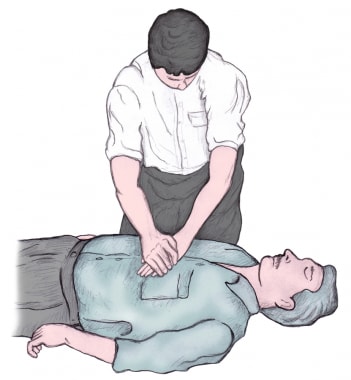Burns and Scalds
These are injuries caused by extremes of temperatures (heat or cold), chemicals or radiation. Burns caused by 'moist' heat such as steam or hot liquids are called scalds.
CAUSES OF BURNS AND SCALDS
A burn is caused by:
- Dry heat (fire or hot objects)
- Electrical burn (contact with electrical current or by lightning)
- Friction (from a revolving wheel or fast moving rope)
- Chemical burn (strong acids or alkalis)
- Intense cold (liquid oxygen, liquid nitrogen and extremely cold metals)
- Radiation (exposure to sun or radioactive substances)
A scald is caused by:
- Moist heat (hot liquid or steam)
EXTENT OF BURNS
The Rule of Nines
- The diagram divides the body surface into areas of nine percent. Any injury of an equivalent area will require hospital treatment. Any burn larger than 2 cm - 3 cm (1 inch) diameters requires medical attention.

LEVEL OF BURNS

Superficial burns (First Degree Burn)
- These burns involve only the outer layers of skin and results in general redness, swelling and extreme tenderness. This type of burn usually heals well.
Intermediate burns (Second Degree Burn)
- These burns involve the formation blisters which may be intact of broken with an area of surrounding redness. Intermediate burns may become infected so you should seek medical aid.
Deep burns (Third Degree Burn)
- These burns involve all layers of skin. The skin may be appearing pale, waxy and sometimes charred. Because the nerve-endings are damaged, these burns are relatively pain-free. Deep burns always require medical attention.
SYMPTOMS AND SIGNS
- Severe pain at the injury
- Reddening of the skin
- Sometimes blistering
- There may be destruction of skin (charring)
- Shock
WHAT TO DO
- Start cooling the injury as soon as possible. Flood the burn with plenty of cold water but do not delay the casualty's removal to hospital. Help the casualty to sit or lie down. If possible, try to prevent the burnt area from coming into contact with the ground to keep the burn as clean as possible.
- Call 999 for emergency help. If possible, get someone to do this while you continue cooling the burn.
- Continue cooling the affected area for at least 10 minutes or until the pain is relieved. Watch for signs of breathing difficulty. Do not over-cool the casualty because you may lower the body temperature to a dangerous level, causing hypothermia. This is a particular hazard for babies and elderly people.
- Do not touch or otherwise interfere with burn. Gently remove any rings, watches, belts, shoes and burnt or smouldering clothing before the tissues begin to swell. A helper can do this while you are cooling the burn. A helper can do this while you are cooling the burn. Do not remove any clotthing that is stuck to the burn.
- When the burn is cooled, cover the injured area with kitchen film to protect it from infection. Discard the first two turns from the roll and then apply it lengthways over the burn. A clean plastic bag can be used to cover a hand or foot; secure it with a bandage or adhesive tape applied over the plastic, not the damaged skin. If there is no plastic film avaible, use a sterile dressing or improvise with non-fluffy material, such as a folded triangular bandage.
- Reassure the casualty and treat him for shock if necessary. Record details of the casualty's injuries. Monitor and record his vital signs - breathing, pulse and level of response while waiting for help to arrive.
CAUTION
- Do not remove anything sticking to the burn; you may cause further damage and introduce inflection into the burnt area
- Do not burst any blisters
- Do not apply any type of lotion or ointment to the burnt area: it may damage tissues and increase the risk of inflection
- The use of specialised dressings, sprays and gels to cool burns is not recommended
- Do not use adhesive dressings or apply adhesive tape to the skin; a burn may be more extensive than it first appears
- If the casualty has a burn on his face, do not cover the injury; you could cause the casualty distress and obstruct the airway.
- Do not allow the casualty to eat or drink because he may need an anaesthetic

No comments:
Post a Comment